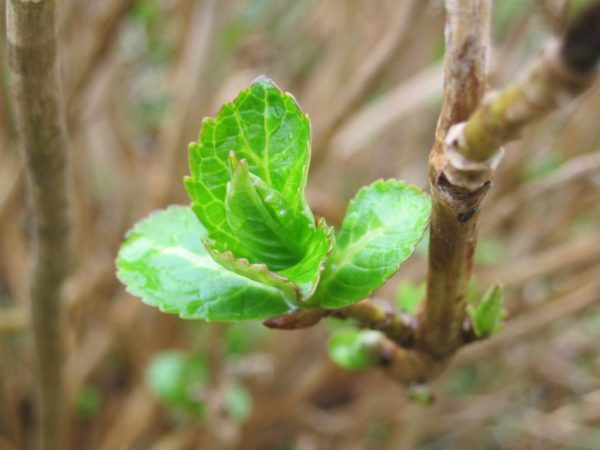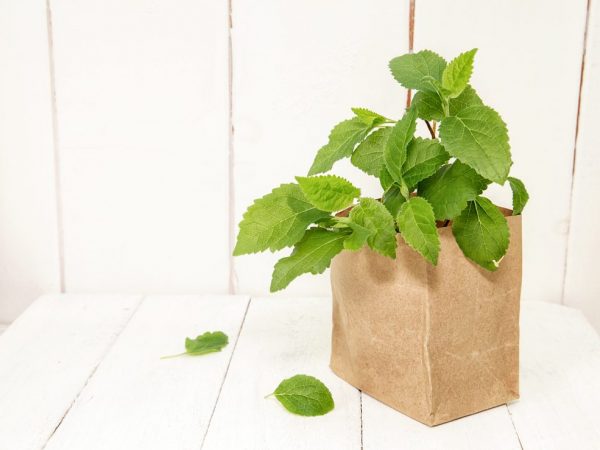Propagation of hydrangea by cuttings in autumn
Having decided to increase the number of hydrangea bushes on your site, you will have to choose the most effective method. The propagation of hydrangea by cuttings in the fall is popular.

Propagation of hydrangea by cuttings in autumn
Hydrangea breeding methods
Hydrangea can be propagated in several ways.
The most popular is cuttings in the fall. They also use planting seeds, dividing the bush and propagating by layering. For some reason, gardeners use these methods less often.
When planting seeds, there may be problems with the germination of the planting material. It will take 2 times more time to get healthy young flowers than when using cuttings or when propagating by dividing a bush.
They are also guided by the time of the procedure. It is better to sow seeds in spring, propagate by dividing the bush in late summer or early September, and use basal processes in early spring. In the fall, work is carried out with cuttings. Observing all the nuances and fulfilling the necessary requirements, it will be possible to prepare high-quality planting material by spring.
An additional advantage is the ability to obtain a large number of cuttings. The person himself selects the material for further work.
For the propagation of hydrangeas in the fall, only its tree-like or large-leaved varieties are suitable. It is better to propagate paniculate species in spring or summer, because difficulties arise with the preparation and rooting of planting material. For those who nevertheless decided to do this before the onset of cold weather, it is better to use not thin annual shoots, but already lignified branches.
Harvesting of cuttings and their processing
Having decided to propagate a beautiful garden shrub with a large-leaved, paniculate or tree-like hydrangea, you should take this activity seriously.
Each stage of vegetative propagation presupposes the presence of some rules, from harvesting cuttings to their rooting and subsequent planting in open ground.
The first thing a gardener will have to face is the preparation of planting material:
- For cuttings, non-lignified shoots are used. They take root faster.
- cuttings are taken from the root parts of the bush. They take root better than lateral shoots.
- The age of a bush suitable for grafting is no more than 10 years.
- The dimensions of the future cutting are taken into account. It should be 15-20 cm long and no more than 6 mm thick.
It is easy to get 2-3 cuttings from one shoot. The main thing is to leave 2-3 pairs of kidneys on each of them. Slices are made oblique at a distance of 1-1.5 cm from the eye. The tool must be sharpened, treated with alcohol-containing agents.
If the cut parts of the shoots have leaves, they are shortened. This is important for organizing the outflow of nutrients from foliage to root formation. Then the future planting material at home is treated with biostimulants. They use "Heteroduxin", "Kornevin", "Epin" and others.Before planting, they are soaked in a weak solution of potassium permanganate.
Preparing the soil substrate
The planting container is chosen with a good drainage system that will cope with excess moisture. Content may vary.
There are several options for the soil substrate, which is easy to prepare for rooting the cut material at home. To cut a flower in the autumn, choose one of the following recipes:
- A mixture of sand and peat (1: 2). Analog - a ready-made substrate for growing azaleas.
- A mixture of turf, sand and peat (1: 4: 3), treated with steam.
- Soil from the garden with coniferous litter and sand (in equal proportions). Humus is also added to this mixture.
The bottom of the pot is covered with a drainage layer of 2-3 cm. The soil is poured to the top and tamped.
Planting blanks and germinating them

Young leaves will begin to appear on rooted cuttings
The next stage of hydrangea cuttings in the fall is planting the harvested material. Small depressions of 3-4 cm are made in the ground. Cuttings are placed in them. Place them vertically, at a slight angle. The installed material should not touch the ground with its leaves.
The distance between the seedlings is at least 5 cm. After they are sprayed with a spray bottle, the soil is carefully watered. The container is covered with polyethylene or a glass jar. Further care comes down to simple actions. The seedlings are watered daily, the mini-greenhouses are ventilated and the room temperature is maintained in the room. Rooting time - 2-3 weeks. You can recognize the success of the process by the new leaves that appear on the cuttings.
Rooting in water
Cuttings can be rooted not only in soil, but also in a water-based nutrient medium. The advantage of this method is the ability to observe root formation.
Preparation for the procedure does not require much effort. You will need a container, better transparent, water and cinnamon. 1 tbsp. l. cinnamon is added per 200 ml. water. Following actions:
- The workpieces are immersed in a nutrient medium by 1/6 of their total length. For every 200 ml of liquid, there are no more than 3 cuttings.
- Cuttings taken in the fall are rooted in a dark place.
- Monitor the water level in the container. If it evaporates, the liquid is added. Use only warm and purified water.
Cutting hydrangeas in the autumn using water is difficult. The most common problem is material decay. This can be easily avoided by daily aeration of the liquid with oxygen.
The planting material will become ready for further use when its roots reach 2-5 cm. The transplant is carried out in a fertile slightly acidic soil.
Rooted cuttings care
When roots appear on the cut material, it is taken out and placed in a nutritious substrate of garden soil, peat and sand (2: 2: 1). Planting is carried out in small pots, which are later set in a shady place. Further care is limited to systematic watering.
Planting in a permanent growing place is organized only next spring. Pre-hardening is carried out on a veranda, loggia or balcony.
Conclusion
Growing hydrangeas from cuttings saves a lot of time and effort to get a healthy plant. You just need to cut the cuttings from the shoots and root them. Planting on a permanent germination site will be available in a few months.


